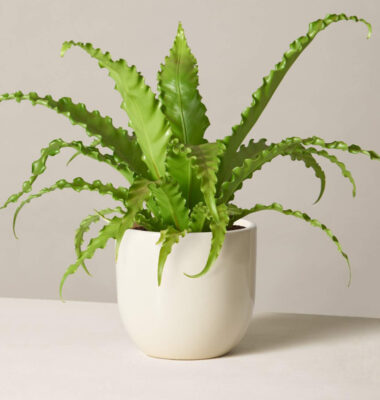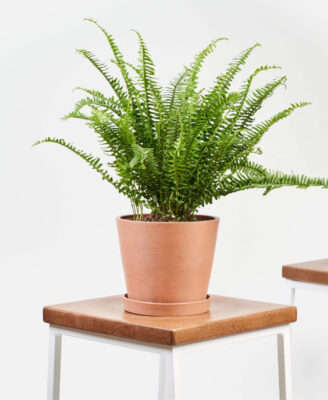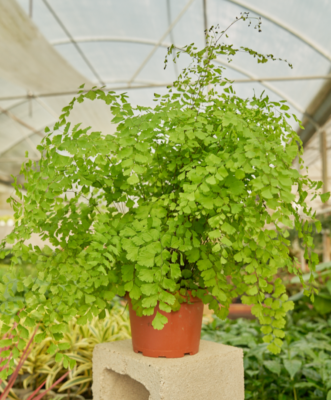How To Care for Your Fern, One of the Most Ancient Plants on Earth
All of this is to say you should own one if you don't already. Below, Erin Marino, marketing director at NYC-based plant shop The Sill, offers advice for how to care for yours so you don't let it die like the poor famous fern in the film.
How much light your fern needs
With so much diversity in the fern category, Marino notes that it's difficult to give universal lighting instructions. "That being said, most of the varieties of ferns that have been commercialized and are now popular indoor houseplants do best in medium to bright, but indirect, natural light," she says. "That’s because the majority of these varieties call shady forest floors and tropical wetlands home."
There are some exceptions, of course. Marino notes that the popular staghorn fern prefers a bit more bright light, and can even handle some direct sunlight.
How to water your fern correctly
Ferns like a lot of moisture. "You’re looking at watering about once a week, increasing the frequency during the summer growing season, and decreasing the frequency during semi-dormancy period in the winter," says Marino.

{{post.sponsorText}}
Ferns also rely on humidity, so Marino advises either increasing the humidity in your home with a humidifier or placing your fern in a terrarium container. "It’s a little extra work to keep a fern happy and healthy indoors where the air is usually dry, but these beautiful tropical plants in vibrant shades of green are definitely worth the extra effort," she says.
The right temperature for your fern
To this end, Marino offers a simple metric. "Think 70 degrees and sunny," she says.
How to pot your fern
To pot your fern, Marino advises looking for a planter just slightly larger than your nursery's grow pot, as ferns don't mind being a little snug. Due to frequent watering, you'll want to opt for one that has a hole for drainage and a saucer beneath. Any favorite indoor potting soil will do.
Where to buy a fern
Ready to care for a fern of your very own? The online marketplace is a good spot to find the one that's right for you and your home decor.
1. Bird's Nest fern, $55
The Sill sells a number of ferns, but the Bird's Eye is Marino's personal favorite. "It's known for its wavy fronds that grow out of a central rosette," she says. "It can also be epiphytic—it can grow on other plants—in its native environment, growing on trees in the rainforest canopy." This fern, she adds, does best in medium to bright indirect light but can tolerate low light, too.
2. Kimberly queen fern, $65
This medium-sized Kimberly Queen fern from Bloomscape is low-maintenance and non-toxic, meaning it's safe for your naughtiest pets to munch on. Pots are available in five different color ways, and shipping is within two weeks.
3. Maidenhair fern, $16
Rooted is an adorable Brooklyn plant shop ships nationwide, and its prices can't be beat. Plus, they assign human names to their plants, which is a cute touch. This gal's named Marion, and she's a Maidenhair Fern. She is extremely delicate, but if you take close care of her you'll be rewarded with the gorgeous growth pictured here.
Loading More Posts...


